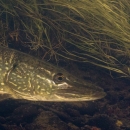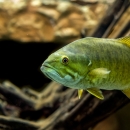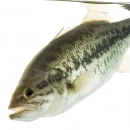States
MichiganEcosystem
River/streamThe Crystal River Fish Passage and Restoration Project has been successfully completed, replacing a severely undersized stream crossing structure structure
Something temporarily or permanently constructed, built, or placed; and constructed of natural or manufactured parts including, but not limited to, a building, shed, cabin, porch, bridge, walkway, stair steps, sign, landing, platform, dock, rack, fence, telecommunication device, antennae, fish cleaning table, satellite dish/mount, or well head.
Learn more about structure that previously blocked access to 2.1 miles of pristine habitat and adversely affected riparian riparian
Definition of riparian habitat or riparian areas.
Learn more about riparian wetlands and stream substrates for over 2,000 linear feet. This section of the river flows through the Sleeping Bear Dunes National Lakeshore and is home to state-listed freshwater mussels as well as various fish species, including northern pike, white sucker, smallmouth bass, largemouth bass, and yellow perch.
With this project completed, the section of the river can now accommodate over 15,000 recreational watercraft trips per season more safely, reducing the risks of collisions with motor vehicles and minimizing stress on the stream bed and banks.
Project Quick Facts:
| Project Status | Complete |
| Location | Michigan |
| NFPP Project Funding | $400,000 |
| Restoration Techniques | Barrier removal |
| Accomplishments | 2.1 Stream Miles Reconnected |
| Partner Project Lead | Conservation Resource Alliance |
The National Fish Passage Program combines technical expertise with a track record of success.
Implemented primarily through the Service's Fish and Wildlife Conservation Offices, the National Fish Passage Program provides financial and technical assistance to partners across the country. Since 1999, the program has worked with over 2,000 local communities, Tribes, and private landowners to remove or bypass over 3,400 barriers to fish passage fish passage
Fish passage is the ability of fish or other aquatic species to move freely throughout their life to find food, reproduce, and complete their natural migration cycles. Millions of barriers to fish passage across the country are fragmenting habitat and leading to species declines. The U.S. Fish and Wildlife Service's National Fish Passage Program is working to reconnect watersheds to benefit both wildlife and people.
Learn more about fish passage and reopen access to over 61,000 miles of upstream habitat for fish and other animals. Staff have expertise in fish migration and biology as well as financial, engineering, and planning assistance to communities, Tribes, and landowners to help them remove barriers and restore rivers for the benefit both fish and people.
Fish passage project proposals can be initiated by any individual, organization, government, or agency. However, proposals must be submitted and completed in cooperation with a Fish and Wildlife Conservation Office. (Please note that fish passage projects being used for federal or state compensatory mitigation or required by existing federal or state regulatory programs are not eligible for funding through the National Fish Passage Program.)
CONTACT A FISH PASSAGE COORDINATOR IN YOUR AREA TO GET STARTED.







